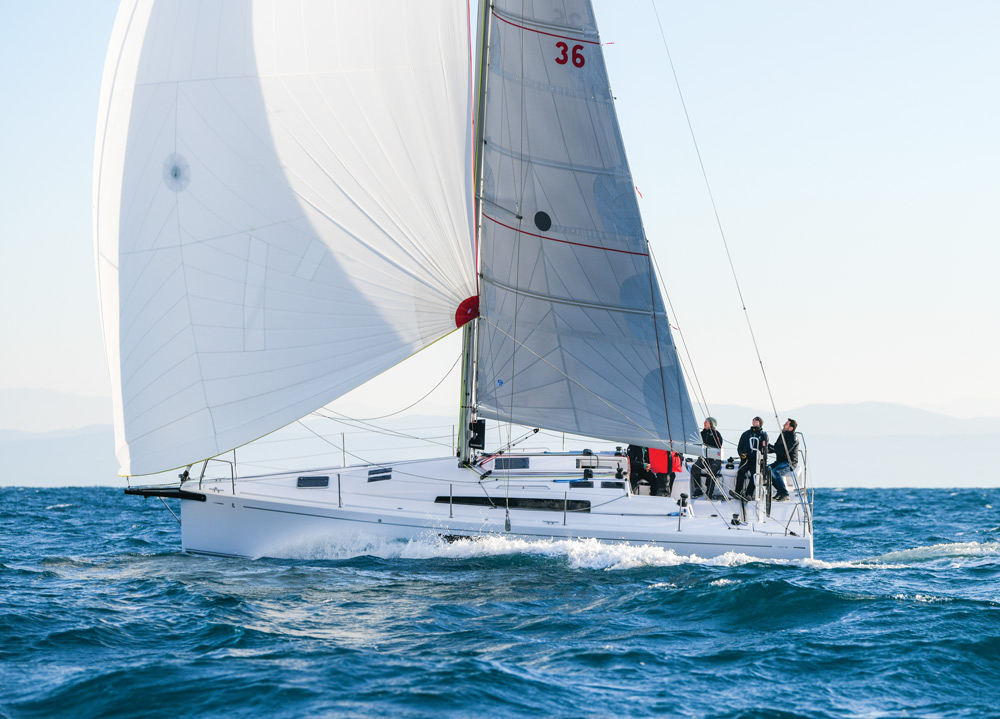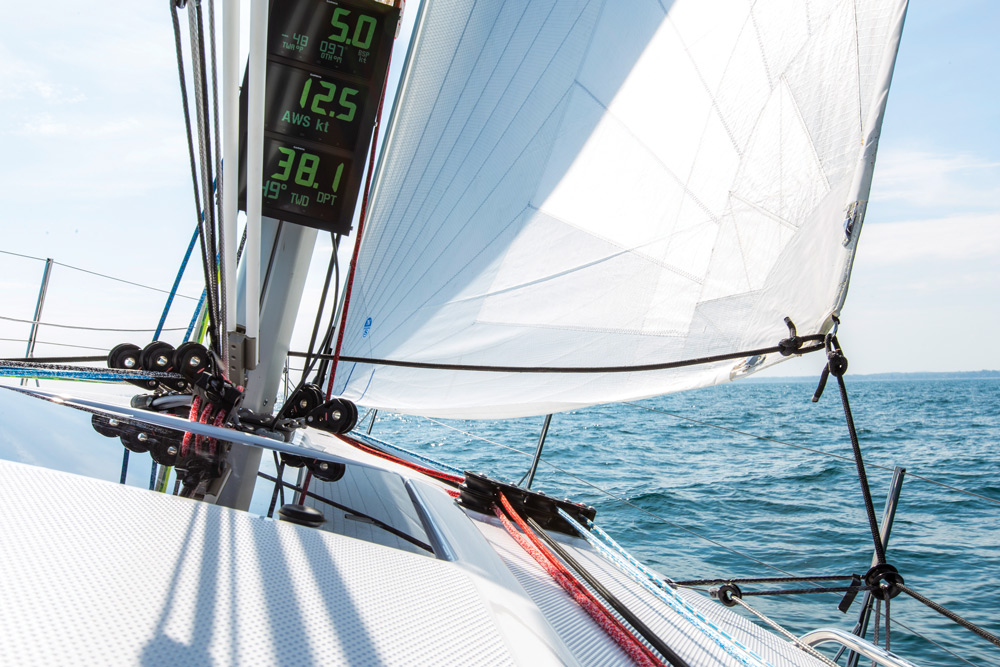Beneteau First 36
Beneteau’s latest midsize racer-cruiser gets the mix right
The Beneteau First series has a long history and proud pedigree. Launched in the late 1970s, Beneteau First designs have collected wins all over the globe. Over time, the design ethos wavered a bit, but the First series is back. This latest series started with the First 53, followed by several very hot sports boats. The First 36 shows what can happen when you combine a targeted, clean sheet-of-paper-design ethos, a globe-spanning dream team, and the resources of a world-renowned builder.

To meet this seemingly impossible design goal, Beneteau assembled a dream team. The team’s core was Seascape, the Slovenian company that Beneteau became the majority owner of in 2018. Seascape has produced some great boats and is responsible for Beneteau’s newest First sport boats, the First 14, 24 and 27. Seascape had a long history with naval architect Sam Manuard, of IMOCA and Open 40 fame, who was on board for the 36. Sam and the Seascape team are skilled with composites, but to design the hull scantlings the company enlisted New Zealand company Pure Design and Engineering, which perform the same services for America’s Cup boats. Lorenzo Argento, coming off projects with Wally and Brenta Yachts, designed the interior and deck for First 53, and ensured design continuity with the 36. Wanting to get the 36 just right, Beneteau also engaged Sito, an innovative Slovenian industrial design firm, to make sure that the boat worked from a ergonomic perspective.

On deck
The cockpit of the First 36 does a great job balancing its two missions. The 12-foot 8-inch beam is carried well aft, making for a huge cockpit. The transom is open with twin composite wheels just forward. The forward end of the cockpit is convertible between racing and cruising. Long settees are perfect for stretching out with a book in cruising form. On the race course, the aft end of the settees is removed, allowing direct access to the primary winches. Our test boat didn’t have a cockpit table, but there is an option to include a rail-mounted table between the settees. The removable settee boxes offer a lot of storage, and there are lazarettes on the stern quarters and a large lazarette in the cockpit sole. There is a retractable swim step for easy dinghy boarding or swimming.
The cockpit is comfortable, and designed for sailing. There are six Harken winches—two on the cabintop for halyards and spinnaker sheets, two primaries and two mainsheet winches. The full-width traveler is set just forward on the helms, with a winch to outboard on each side.
The boat has an optional fiberglass sprit for the kite, and cleanly houses a proper anchor, complete with anchor locker and windlass. There is an optional Facnor FlatDeck jib furler on the stem. The furler is low profile to maximize the luff length and uses flat webbing as the furling line to eliminate overrides. There are no jib lead tracks on the deck, the sheet lead is controlled by Beneteau’s 3D Floating Point lead system. This friction ring can be adjusted up and down, in and out, allowing for a precise lead angle without leaving the cockpit.
The First 36 has an aluminum mast and boom, but a carbon fiber option is available.

Comments